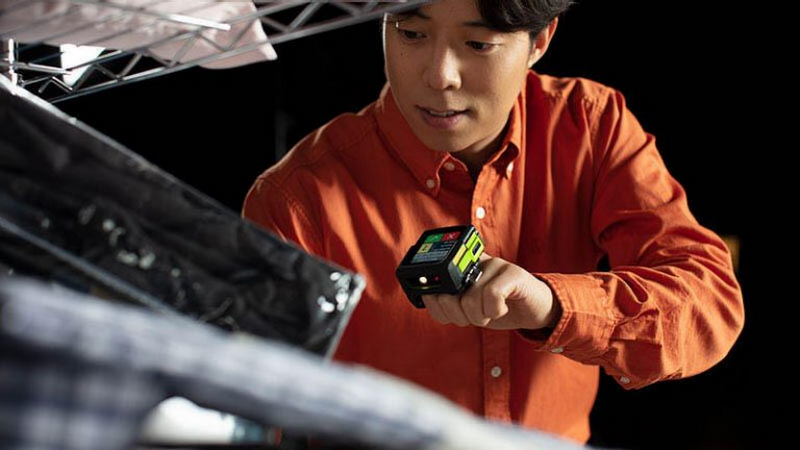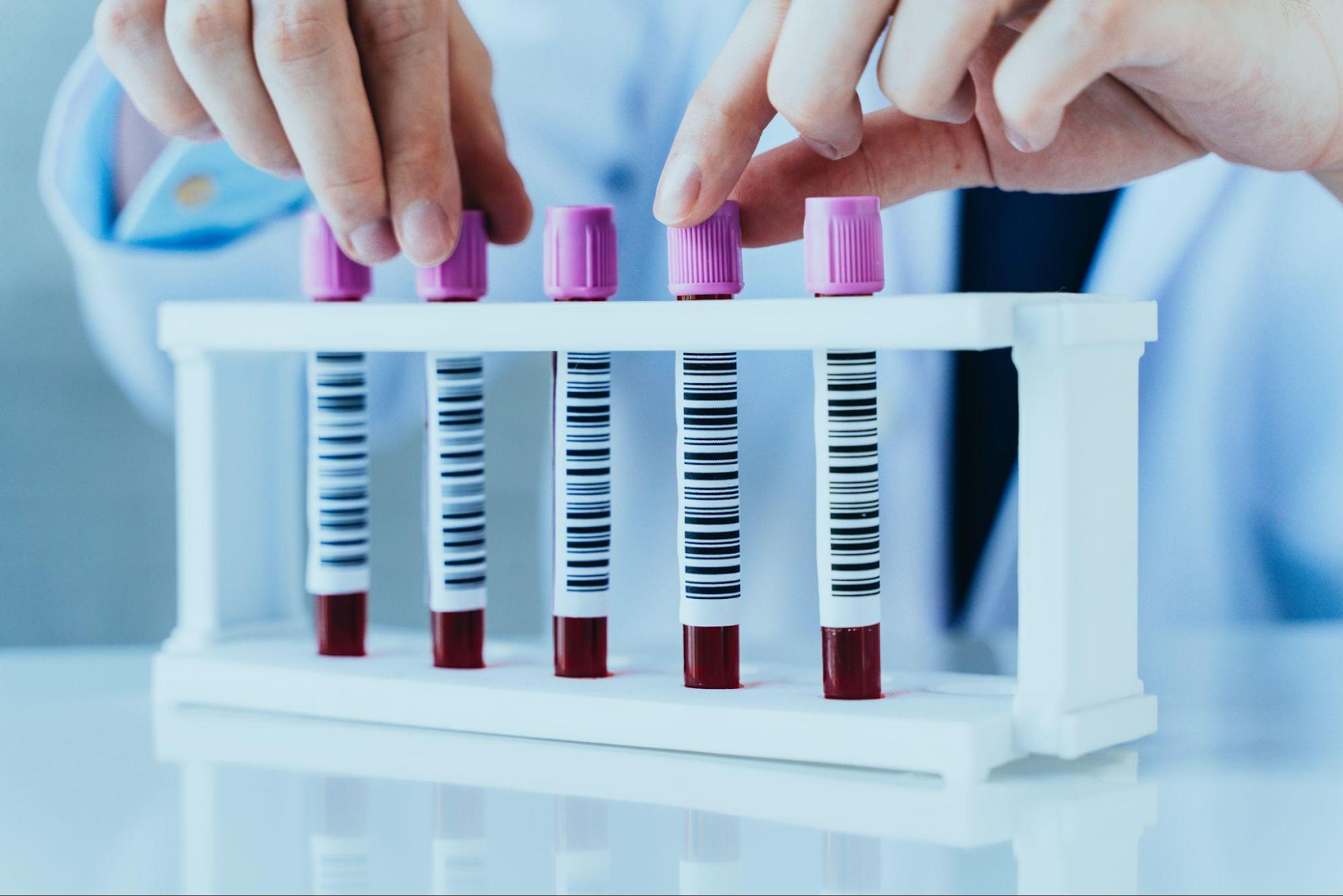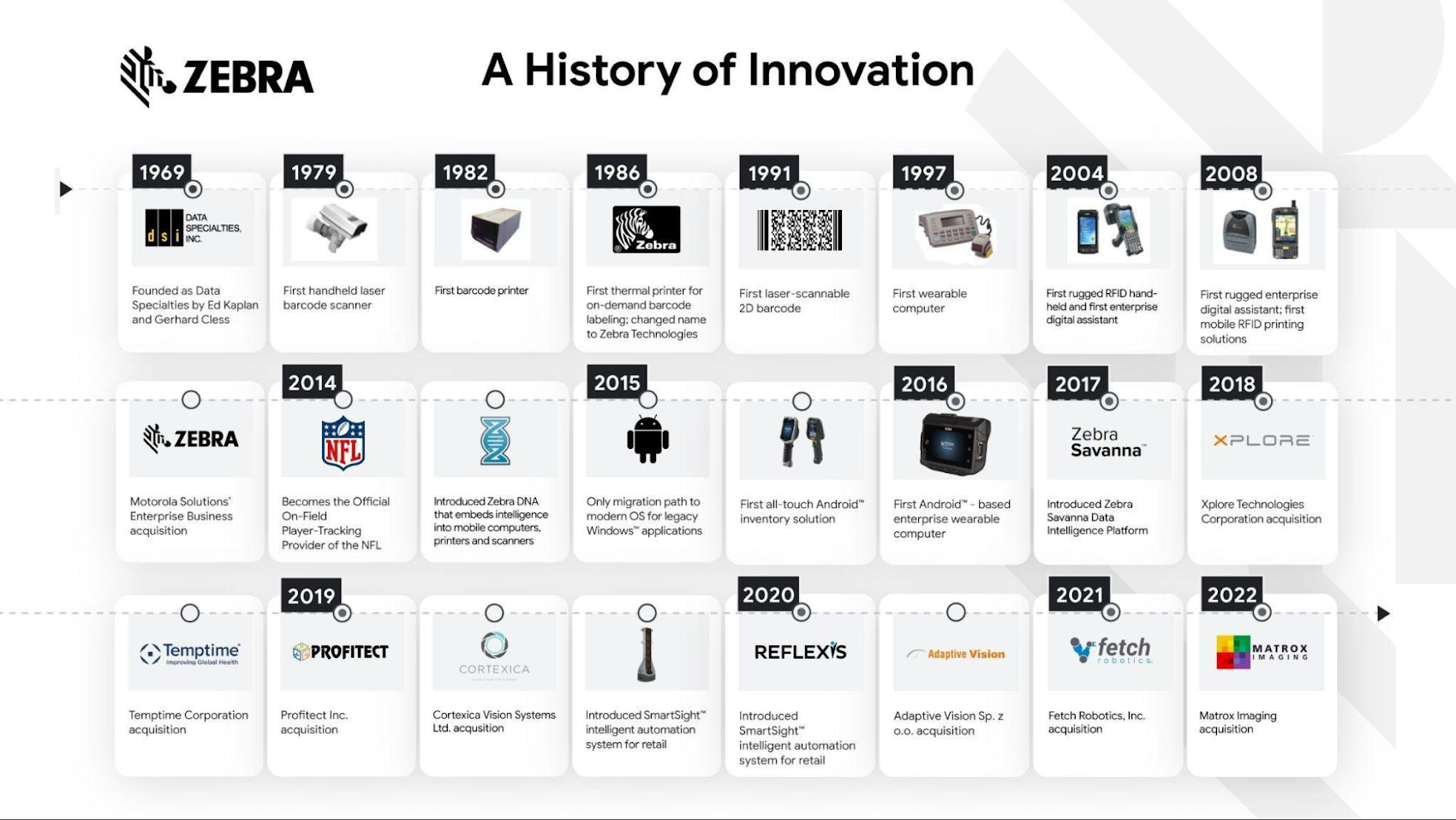Changing its stripes: How Zebra Technologies is helping transform the supply chain

Jo Maitland
Editor, Transform with Google Cloud
How Zebra is pivoting from barcode printers and scanners to supply chain visibility software.
On the 26th June 1974, Sharon Buchanan, a cashier at the Marsh supermarket in Troy, Ohio, scanned the world’s first Universal Product Code (better known as a barcode) on a 10-pack of Wrigley's Juicy Fruit gum.
The 1.5 x 0.9 inch black bars and white spaces represented a sequence of numbers unique to the item it was printed on. This pattern could be deciphered by a computer that would in turn provide pricing information and adjust the stock database to reflect the sale. Ka-ching! A new era was born. According to GS1, the Brussel’s-based non-profit that manages the standard, barcodes are scanned approximately 5 billion times a day.
Within a decade retailers would embrace the technology and the simple barcode would make its way into practically every industry you can imagine tracking products through the supply chain.
Consider your luggage at the airport, your rental car, UPS and FedEx packages, library books, anything on an assembly line or conveyor belt, on pallets and cases, on warehouse shelves and loading docks. Vaccines traveling to every country in the world. We can be tracked with barcodes too. Think about the wristband you are given in the hospital to ensure you get the right medication at the right time.
In 1986, one company doubled down on the black and white striped codes, renaming itself Zebra Technologies, and went on to become one of the largest suppliers of barcode printing and scanning devices globally. Today, Zebra has customers in manufacturing, retail, healthcare, transportation, logistics, and the public sector with over 10,000 partners across 100 countries.


Can a Zebra change its stripes?
But the march of technology continues and even the ubiquitous barcode can be improved. Zebra introduced 2D barcode scanners in 1991 followed by Radio Frequency Identification (RFID) tracking tags, rugged mobile computers, tablets and wearable devices for increased visibility of inventory and other assets. Lately it’s been acquiring companies in software, robotics, AI, data capture and real-time location systems, all to help it transform from a traditional hardware-centric company to a software solutions organization to realize a vision it calls enterprise asset intelligence (EAI) at the edge.
Any company that’s been around for as many decades is always transforming
Tom Bianculli, SVP and CTO at Zebra
Enterprise asset intelligence refers to a businesses’ ability to obtain real-time visibility into every aspect of its business to improve productivity and reduce costs. It’s made possible by IoT, cloud, connected mobile devices, mobile apps, location systems, wireless local area networks (WLANs) and security technologies that are coming together so that every asset and worker on the edge of a customers’ operations can be visible, connected, and fully optimized.
On top of these capabilities, Zebra is building software that automatically “senses” information from enterprise assets, such as packages moving through a supply chain, equipment in a factory, workers in a warehouse or shoppers in a store. Operational data from these assets, including status, location, utilization, or preferences, is then “analyzed” to provide actionable information. And this information can then be sent to the right person at the right time to drive better, more timely decisions.
Old systems of record do not support new digital supply chains
Today, in transportation and logistics, Zebra can help track and trace a product through the supply chain, in food scenarios for example, or to provide efficacy for a medication or a vaccine. Its future, it claims, is the cloud-enabled version of that. “What if that tag on the package of produce or biopharmaceutical was not just discretely readable at the point of delivery—as to whether it’s in-temperature profile — but what if it was streaming that temperature data back, live to the cloud, and what if it was streaming the location of that asset and its condition throughout its journey, and we knew all of that in real-time,” Bianculli said. “That’s where we want to take things.”
It’s hardware talking to software talking to the cloud. People, products, data and devices connecting instantaneously. By providing the ability to track critical assets and convert the physical to digital, Zebra hopes to give its customers a technological — and visionary — edge, ultimately boosting the bottom line.
But what’s worked in the past for enterprise asset management—legacy systems of record such as CRM, ERP and WMS systems, that provide an historical view—will not cut it in the on-demand economy, according to Bianculli. He said Zebra customers are looking at streaming data coming off a handheld or point of sale unit, or a telemetry device in a vehicle, that’s sending that data up to the cloud in real-time.
Many of Zebra’s customers want to know what’s happening now and what to do in the future. “They want to get really descriptive about what’s happening now and then predictive and prescriptive about what to drive in the workflow as a result,” he said.
In service of this, Zebra is moving beyond lift and shift to modernizing its infrastructure to get all the benefits the cloud can provide. “Google Cloud advanced services like artificial intelligence and machine learning are where we will be able to offer significant productivity gains for our customers,” Bianculli said.
Transformation doesn’t have an end game
Building technical capability is just the beginning. Adding the required skills and redesigning workflows are as important as improving technology and often harder to achieve than plugging in a new system.
“We’re in the early innings of digitizing the workflows, collecting the data, using the data to point to where there are opportunities and mobilizing those as actions down to those frontline workers,” said Bianculli. The company has been here before and has a history of riding new technology adoption curves to its competitive advantage.


One of the things we’re always asking ourselves is if we are moving fast enough. If what’s happening outside our company is moving faster than what’s happening inside, then we’re falling behind. We need to move fast and we’re partnering more than ever to do that.
Tom Bianculli, SVP and CTO, Zebra Technologies
Working with Google Cloud is helping Zebra innovate faster and realize its vision of delivering enterprise asset intelligence to its customers, transforming from a hardware company to a software and solutions organization along the way.
If you’d like to learn more about Zebra Technologies, we have two channels for you. You can tune in and either watch or listen to a discussion between Tom Bianculli, SVP and CTO, Zebra Technologies and Janet Kenney, Vice President, North America Regions, Google Cloud. Check out the Zebra Technologies episode of The Transformation Debrief below. And for the podcast deep dive into Zebra’s transformation journey click through to That Digital Show.




